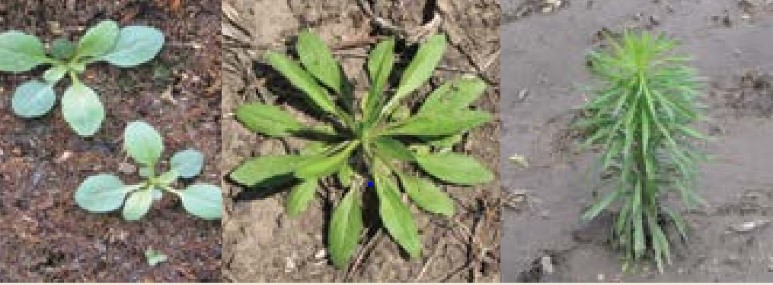Spring is in the air! The grass is greening up, the songbirds are back serenading us, each day is getting longer, the daily temperature is sort of warming up, and snow is changing to rain (for the most part). But that is the problem, isn’t it? Temps are staying lower than average, and the precipitation does not seem to want to stay away for longer than a 48-hour stretch, at best. In Champaign, the average temperature for the month of April so... Read More →
ILSOYADVISOR POST
Managing Weeds Before They Become a Problem
May 10, 2020
The saying “It’s better to be proactive instead of reactive.” holds a lot of weight for soybean growers when it comes to managing weeds in a burndown. There are a lot of no-till fields in the state of Illinois, therefore these fields need to be managed differently than a conventionally tilled field. In many fields across Illinois, glyphosate-resistant marestail has increasingly become a challenge to manage. In today’s modern climate, there are new Group 4 growth regulator, trait tolerant soybeans in the market for planting 2020. But should a grower solely rely on a post-emergence solution?

Photo Caption: The 3 stages of early growth (L to R): seedling, rosette, and bolting. (Picture belongs to Kansas State University)

(note the vegetation size).
This weed is considered a winter annual, which means it will germinate in the fall, grow to a rosette stage and then begin to bolt. It is recommended to apply a spring burn down prior to the weed bolting. Once the weed bolts, it becomes more difficult to kill.
This picture is of glyphosate-resistant marestail that was sprayed with only glyphosate (note a green plant that looks beat up but is still growing). The concept cannot be overstated that if a field is relying on a herbicide application to terminate marestail weeds (no-till), understanding the growth stage and adding a Group 4 growth regulator product into the application is so very important.
Recommendation:
1. Spray prior to weeds bolting or growing aggressively. It’s important to scout fields
2. Make sure a Group 4 herbicide is in the tank (2,4-D or Dicamba)
a. Understand label application restriction for the Group 4 herbicide (7-14 days before planting)
b. Understand the herbicide traits of the selected soybeans and how burndown will complement or cause potential issues
i. 2,4-D burndown on Dicamba traited soybeans
ii. Dicamba on 2,4-D traited soybeans
iii. Dicamba or 2,4-D on non-Group 4 traited soybeans
3. Proper tips/adjuvants can help to ensure an adequate volume of herbicide makes it to and into the weed
4. Make sure the water being used as the carrier is properly treated and won’t create performance issues with the glyphosate and the growth regulator
5. Use a residual herbicide with burndown that is effective against the weeds that create yield-robbing events for your soybeans
6. With the recent cold conditions, consult with your local suppliers on how your selected herbicide will perform under your regional condition
It’s important to consult with a local CCA and also review herbicide label restriction prior to application. This information can provide valuable insight to minimize a very costly incident, but also provide recommendation to effectively protect soybean yields.
Additional Resources:





Comments
Add new comment